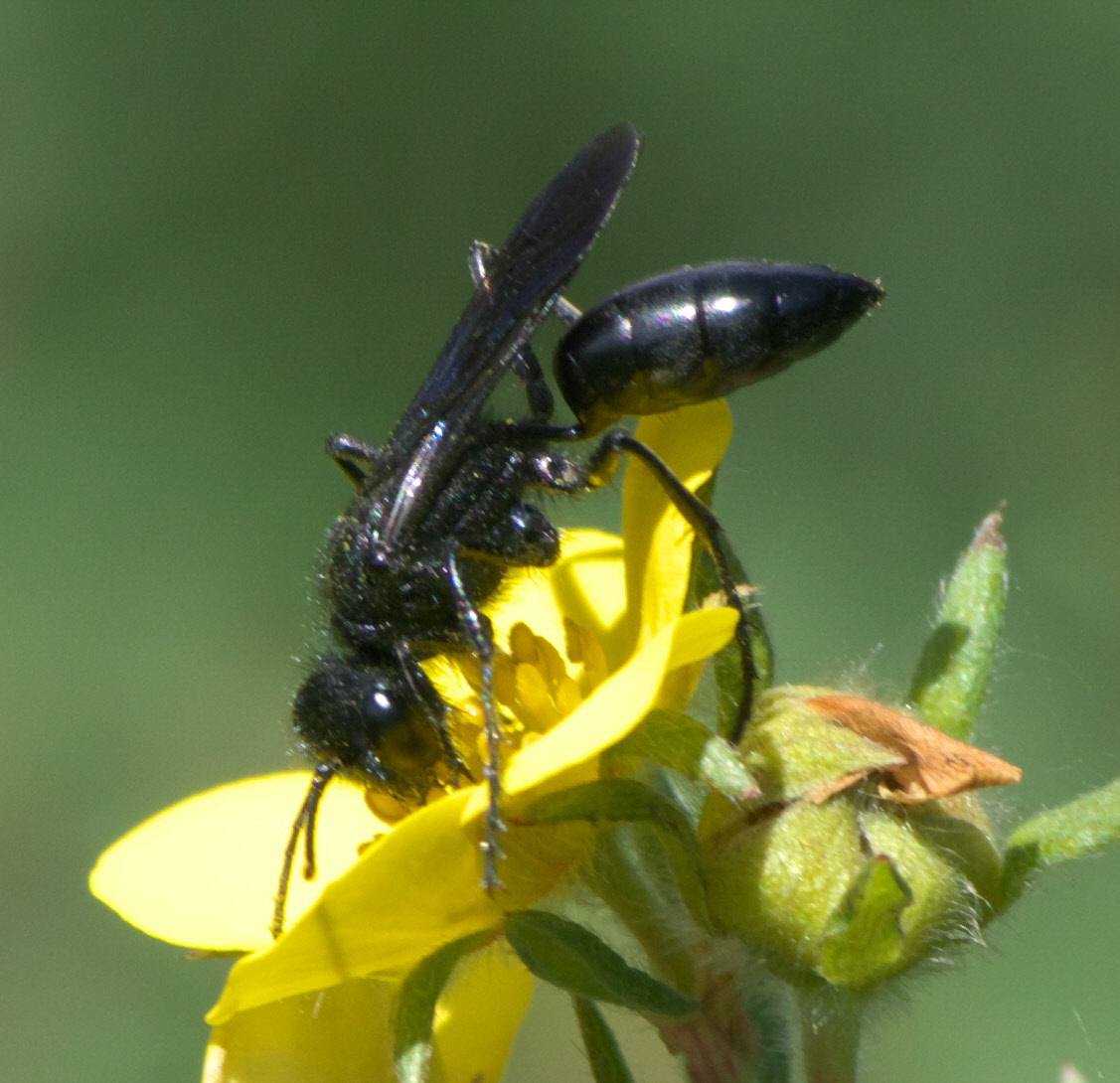|
Sceliphrinae
Sceliphrinae is a subfamily of thread-waisted wasps in the family Sphecidae. There are about 6 genera and at least 140 described species in Sceliphrinae. Genera These six genera belong to the subfamily Sceliphrinae: * '' Chalybion'' Dahlbom, 1843 (blue mud wasps) * '' Dynatus'' Lepeletier de Saint Fargeau, 1845 * '' Penepodium'' Menke in R. Bohart and Menke, 1976 * ''Podium'' Fabricius, 1804 * ''Sceliphron'' Klug, 1801 * '' Trigonopsis'' Perty, 1833 i c g * †'' Hoplisidia'' Cockerell, 1906 * †'' Protosceliphron'' Antropov, 2014 Data sources: i = ITIS, c = Catalogue of Life, g = GBIF, b = Bugguide.net References Further reading * * * External links * Sphecidae {{apoidea-stub ... [...More Info...] [...Related Items...] OR: [Wikipedia] [Google] [Baidu] |
Thread-waisted Wasp
The Sphecidae are a cosmopolitan family of wasps of the suborder Apocrita that includes sand wasps, mud daubers, and other thread-waisted wasps. The name Sphecidae was formerly given to a much larger grouping of wasps. This was found to be paraphyletic, so most of the old subfamilies have been moved to the Crabronidae. Biology The biology of the Sphecidae, even under the restricted definition, is still fairly diverse; some sceliphrines even display rudimentary forms of sociality, and some sphecines rear multiple larvae in a single large brood cell. Many nest in pre-existing cavities, or dig simple burrows in the soil, but some species construct free-standing nests of mud and even (in one genus) resin. All are predatory and parasitoidal, but the type of prey ranges from spiders to various dictyopterans, orthopteroids and larvae of either Lepidoptera or other Hymenoptera; the vast majority practice mass provisioning, providing all the prey items prior to laying the egg. ... [...More Info...] [...Related Items...] OR: [Wikipedia] [Google] [Baidu] |
Sceliphron Caementarium P1300772a
''Sceliphron'', also known as black mud daubers or black mud-dauber wasps, is a genus of Hymenoptera of the Sphecidae family of wasps. They are solitary mud daubers and build nests made of mud. Nests are frequently constructed in shaded niches, often just inside of windows or vent openings, and it may take a female only a day to construct a cell requiring dozens of trips carrying mud. Females will add new cells one by one to the nest after each cell is provisioned. They provision these nests with spiders, such as crab spiders, orb-weaver spiders and jumping spiders in particular, as food for the developing larvae. Each mud cell contains one egg and is provided with several prey items. Females of some species lay a modest average of 15 eggs over their whole lifespan. Various parasites attack these nests, including several species of cuckoo wasps, primarily by sneaking into the nest while the resident mud dauber is out foraging. As is the case with many insect genera, there are man ... [...More Info...] [...Related Items...] OR: [Wikipedia] [Google] [Baidu] |
Chalybion
''Chalybion'' is a genus of blue mud dauber wasps in the family Sphecidae. ''Chalybion'' species nest in a wide range of natural and artificial cavities such as holes in wood, walls, plant stems, etc., where they typically provision their brood cells with paralyzed spiders. They also reuse old nests of other wasps like ''Trypoxylon'' and ''Sceliphron''. Species There are 49 described species of ''Chalybion'': * '' Chalybion accline'' (Kohl, 1918) * '' Chalybion ammophiloides'' Hensen, 1988 * '' Chalybion bengalense'' (Dahlbom, 1845) (Hawaii, Mauritius, Mozambique, Seychelles, Socotra, South Africa; introduced in Italy) * '' Chalybion bocandei'' (Spinola, 1851) ** '' Chalybion bocandei bocandei'' (Spinola, 1851) (Ghana, Guinea, Liberia, Sierre Leone) ** '' Chalybion bocandei aeronitens'' Hensen, 1988 (Central African Republic, Democratic Republic of Congo) * ''Chalybion bonneti'' Leclercq, 1966 (Madagascar) * ''Chalybion californicum'' (de Saussure, 1867) – blue mud dauber (Nort ... [...More Info...] [...Related Items...] OR: [Wikipedia] [Google] [Baidu] |
Podium (genus)
''Podium'' is a genus of thread-waisted wasps in the family Sphecidae. There are at least 20 described species in ''Podium''. Species These 23 species belong to the genus ''Podium'': * '' Podium agile'' Kohl, 1902 * '' Podium angustifrons'' Kohl, 1902 * '' Podium aureosericeum'' Kohl, 1902 * '' Podium batesianum'' W. Schulz, 1904 * '' Podium bugabense'' Cameron, 1888 * '' Podium chalybaeum'' Kohl, 1902 * ''Podium denticulatum'' F. Smith, 1856 * ''Podium eurycephalum'' Ohl, 1996 * '' Podium foxii'' Kohl, 1902 * '' Podium friesei'' Kohl, 1902 * '' Podium fulvipes'' Cresson, 1865 * ''Podium fumigatum'' (Perty, 1833) * ''Podium intermissum'' Kohl, 1902 * ''Podium iridescens'' Kohl, 1902 * ''Podium kohlii'' Zavattari, 1908 * ''Podium krombeini'' Bohart and Menke, 1963 * ''Podium luctuosum'' F. Smith, 1856 * ''Podium opalinum'' F. Smith, 1856 * ''Podium plesiosaurus'' (F. Smith, 1873) * ''Podium rufipes'' Fabricius, 1804 * ''Podium sexdentatum'' Taschenberg, 1869 * ''Podium tau'' (Dall ... [...More Info...] [...Related Items...] OR: [Wikipedia] [Google] [Baidu] |
Sceliphron
''Sceliphron'', also known as black mud daubers or black mud-dauber wasps, is a genus of Hymenoptera of the Sphecidae family of wasps. They are solitary mud daubers and build nests made of mud. Nests are frequently constructed in shaded niches, often just inside of windows or vent openings, and it may take a female only a day to construct a cell requiring dozens of trips carrying mud. Females will add new cells one by one to the nest after each cell is provisioned. They provision these nests with spiders, such as crab spiders, orb-weaver spiders and jumping spiders in particular, as food for the developing larvae. Each mud cell contains one egg and is provided with several prey items. Females of some species lay a modest average of 15 eggs over their whole lifespan. Various parasites attack these nests, including several species of cuckoo wasps, primarily by sneaking into the nest while the resident mud dauber is out foraging. As is the case with many insect genera, there are man ... [...More Info...] [...Related Items...] OR: [Wikipedia] [Google] [Baidu] |

